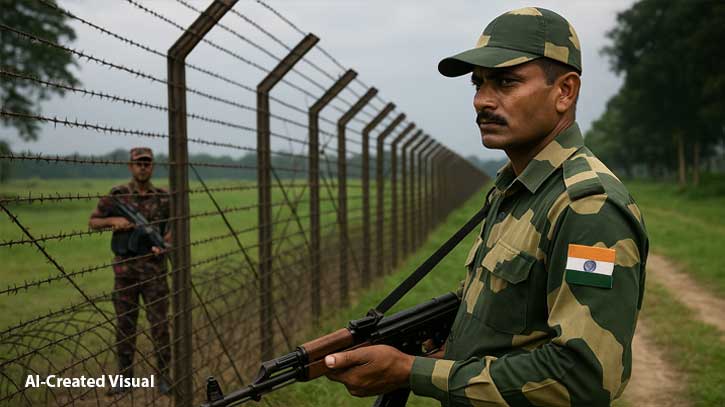While India maintains a cautious stance along its borders with Pakistan and China, its Border Security Force (BSF) often acts aggressively along the Bangladesh border. According to a 2011 report by Human Rights Watch, the BSF has adopted a “shoot to kill” policy in this region. This is in stark contrast to India’s continuous claims of being Bangladesh’s closest ally.
Ironically, during the tenure of a past Bangladeshi government that claimed to have earned India’s eternal gratitude, more than 700 Bangladeshis were killed at the border by the BSF. Analysts argue that since India cannot afford to adopt such a heavy-handed approach at its Chinese or Pakistani borders, it showcases its so-called valor at the Bangladesh border.
India fought its first full-fledged war with China in 1962, resulting in a devastating defeat and the loss of Aksai Chin, a region it has never been able to reclaim. This remains India’s most humiliating defeat in its military history. In 1987, tensions flared again in Arunachal Pradesh, but India quickly reached a settlement with China. More standoffs occurred in 2013, 2017, 2020, and 2021 — in each case, India suffered losses. In the 2020 skirmish, Chinese troops killed 20 Indian soldiers without using firearms, in accordance with the bilateral no-gun-use agreement on the border.
A similar scenario plays out along the Pakistan border. Shortly after independence in 1947, Pakistan took control of a large part of Kashmir. Although India mounted some resistance, the UN’s intervention led to a ceasefire, and Pakistan retained a significant portion of Kashmir. In 1965, another war broke out — this time in Punjab and Kashmir — and again, India suffered considerable losses, even though neither side claimed a decisive victory. The 1999 Kargil War also inflicted heavy casualties on Indian forces, though India eventually declared victory.
In 2001, at the Bangladesh border in a place called Boraibari, just eight members of the Bangladeshi paramilitary force BDR inflicted a severe defeat on the BSF. Several Indian soldiers were killed, and their bodies were abandoned inside Bangladeshi territory. Yet, the then Awami League-led government assured India such incidents would not happen again.
And indeed, over the next 16 years of Awami League rule, BSF continued to kill Bangladeshi civilians almost daily along the border. According to reports from Human Rights Watch and the local rights organization Ain o Salish Kendra, over 700 Bangladeshis were killed by the BSF between 2008 and 2023. Yet Bangladesh seemed to take no visible countermeasures. On the contrary, former Prime Minister Sheikh Hasina once stated,
“India will remember forever what we’ve given them.”
However, the situation has changed since the fall of the Awami League government on August 5. In early 2025, BSF attempted to build barbed wire fencing illegally on several occasions, but this time the Border Guard Bangladesh (BGB) protested strongly, forcing the Indian forces to retreat. The current administration has issued strict instructions to BGB: “Stand tall, not back down.”
In such a context, one may wonder — will the BSF now exercise the same caution at the Bangladesh border as it does with China and Pakistan?

